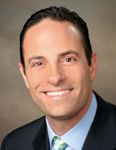Article
Financial lessons from the trenches
As a primary care physician, you're also a business person, with at least some responsibility for managing the practice's finances, and all the responsibility for managing your own.
As a primary care physician, your're probably also a business person, with at least some responsiblity for managing your practice's finances-and all the responsibility for managing your own. But the demands of caring for your patients make it easy to think less about money than may be good for your practice, or yourself.
Medical Economics asked some of our financial experts about ways they have helped physician clients correct money mistakes or solve financial headaches in their practices. These examples of creative solutions they devised may aid your, and your practice's, bottom lines.
LITTLE THINGS = BIG DIFFERENCE

The easiest way to provide the required documentation, Keller says, was via the doctor's income tax returns. "In reviewing my client's income tax returns, before submitting them to the insurance company, I noticed that he had $115,436 in capital gains income, a substantial amount relative to the length of time he had been in practice. I asked him what he did to have such a large capital gain. He told me that his unearned income was nowhere close to that amount and immediately called his accountant."
It turned out that the $115,436 was the total amount of the client's investments. His actual capital gain, after the tax return was amended, was $303. As a result, the client's unearned income was overstated by $115,133, which led to an overpayment of taxes of $39,856. This amount subsequently was refunded to him. "Had the client reviewed his tax returns prior to signing and sending them to the IRS, most likely he would have caught the error," Keller says.
CREATIVE SOLUTIONS SOLVE MULTIPLE PROBLEMS

"The doctor wasn't very far from retiring, but he had not done a very good job of accumulating the assets he would need," Seramba says. "At the same time, he wanted to bring in a much younger partner to whom he would eventually sell the practice. But the younger doctor had a family, loans to pay, and practically no money."
Seramba fashioned a three-step plan that addressed both problems:
For his part, the older doctor received extra cash flow he could use to accumulate assets for retirement, and he knew that in 5 years he would have someone to whom he could turn over the practice.





